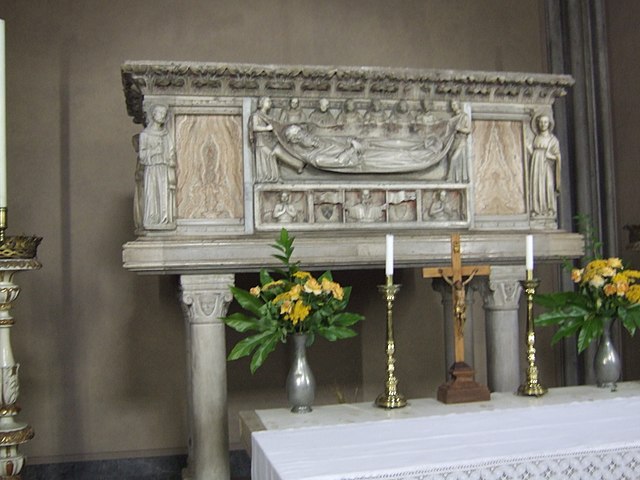- Download:
- MP3 Audio59 MB
 Previously, we heard Odoric (or Odoricus) of Pordenone (or Friuli) describe his travels as a Franciscan missionary to the Far East. This episode, we get an attempt by a later chronicler to craft a saint’s life for the traveler, using surprising little material from Odoric’s writing, but finding many other marvels and miracles to include.
Previously, we heard Odoric (or Odoricus) of Pordenone (or Friuli) describe his travels as a Franciscan missionary to the Far East. This episode, we get an attempt by a later chronicler to craft a saint’s life for the traveler, using surprising little material from Odoric’s writing, but finding many other marvels and miracles to include.
Today’s Text:
-
Moule, A.C. “A Life of Odoric of Pordenone.” T’oung Pao, Second Series, vol. 20, no. 3/4, Aug. 1920 – Aug. 1921, pp. 275-290. JSTOR, https://www.jstor.org/stable/4526615.
References:
-
Yule, Henry. Cathay and the Way Thither. Vol. 1, Hakluyt Society, 1866. Google Books.
Audio credit: Naqqāra/nagara sound clip from a performance by Ghanshyam “Gotoo” Solanki, produced by Udaipur Shakti Works. Used under Creative Commons CC-BY 3.0 license.
Image: Photo of the tomb of Odoric at Chiesa della Beata Vergine del Carmine (via Wikimedia Commons).



Hi, I am a great fan of the show, but as a lowly Biochemistry major I have not had much to say until now. However, since I am as well a fan of the complex (and gruesome!) aspects of sainthood in general, I might have a pointer regarding the double meaning of fistula and ascetic practices.
As far as I understand from the scattered reading I’ve done in my free time, eating or drinking as an act could be in many ways related to more spiritual practices, given the fact that this is how the Eucharist is received. A book that I think touches on this, which I have not read yet, is “Holy Feast and Holy Fast: the Religious Significance of Food to Medieval Women”.
Anyway, there are a few reports of saints having mystical experiences of drinking in their visions, for instance I am pretty certain that St Catherine of Siena (or possible another female mystic? I do not think this was the only case anyway) reported drinking from the wound in Jesus’s side. The link between that and the drinking of communion wine seems obvious, and from this we could I think get quite easily to drinking pus as an ascetic practice. I think I can recall also reading about a saint who drank from the side of Jesus using a straw, but I’m hazy on the details. I think I read about this in the book “Medieval Holy Women in the Christian Tradition, c. 1100-1500”, but except for a vague inkling it was one of saints hailing from the German-speaking territories, I cannot remember which one this was.
Overall, I’m not sure whether there is a case for the double meaning of fistula being related to the spiritual aspects of such ascetic practices, but I have the impression they are linked through the shared element of consumption, which connects them both to the Eucharist. I’d be very interested to know your opinion about this, since this is a completely unprofessional interest of mine.
Thanks for the thoughtful comment! I suspect you’re probably right in that the larger motifs of Eucharistic consumption overwhelm any smaller fistula pun or double-meaning. In the kinds of visions you’re referring to, it certainly seems to me that’s it’s heavily framed in a very personal and intimate way (as I recall, there is also imagery of nursing at Christ’s breasts, though I can’t dredge up a specific example of that), rather than a more ritualized, sacramental way, which would be the context the pipette fistula would be associated with. I haven’t read any of those vision in the original Latin, so I have no idea if the word “fistula” ever occurs. If it does, then the double-meaning idea might have some merit. But in either case, I agree that the larger tradition of Eucharistic feeding/nursing plays a dominant role in shaping the content of those writings.
Thank you very much for the reply! I will now keep an eye out for straws and Eucharistic paraphernalia. I’m sure I will encounter the mystic with the straw at some point, she’s buried somewhere in my enormous “follow-up reading” list. Once again, thank you very much for the podcast!
Good day! Please note a fine offering for you.
http://bit.ly/2qnGz86